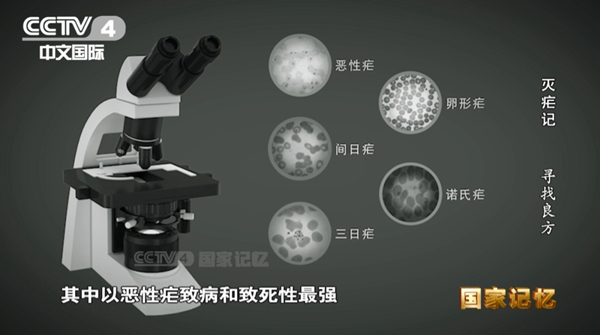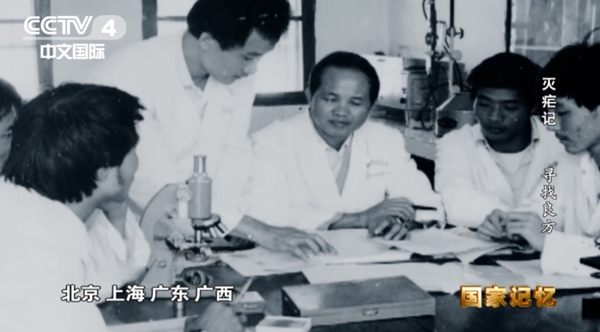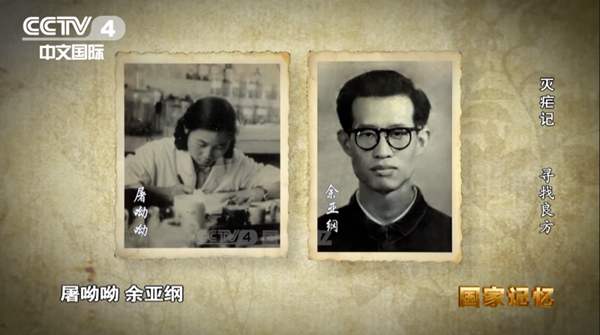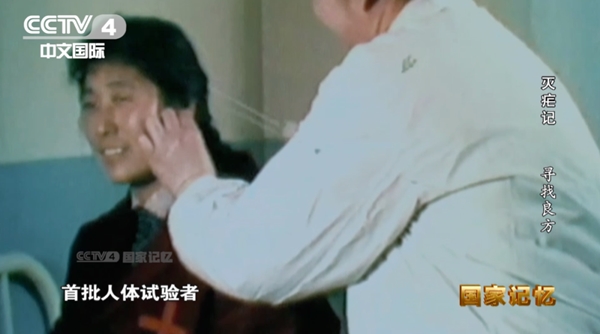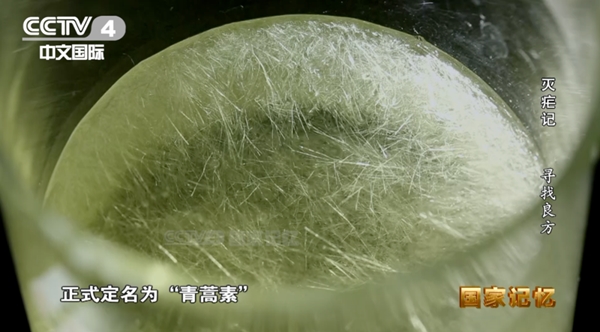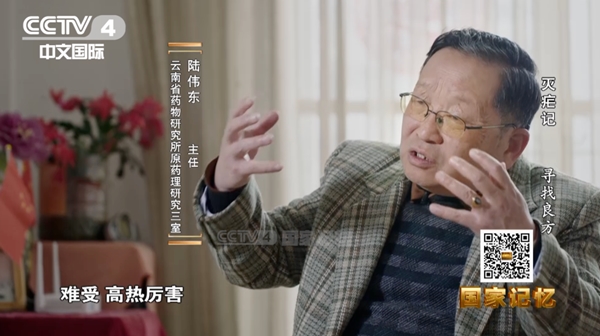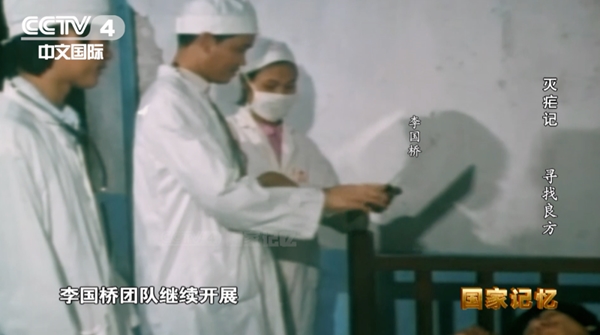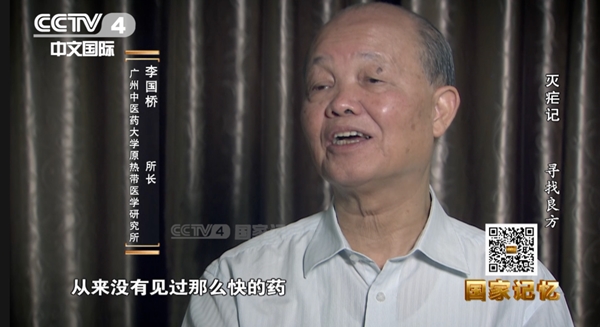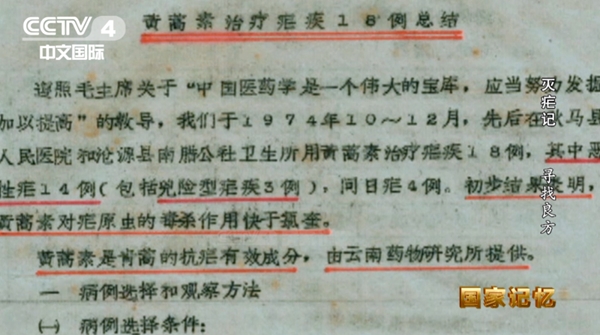Stories
They change the world with a noteless herb
Malaria is a parasitic infectious disease caused by the infection of a parasite. People who suffer from malaria experience symptoms such as high fever and chills that shake the entire body.
In the 1960s and 1970s, China experienced two large-scale malaria outbreaks. At its peak, the number of malaria cases in China exceeded 24 million, making it urgent to find drugs to treat drug-resistant malignant malaria. On May 23, 1967, the National Science and Technology Commission and the General Logistics Department of the People's Liberation Army of China jointly held a meeting and decided to focus on discovering drug therapies, long-term preventive drugs for drug-resistant malaria, and repellents in a relatively short period of time.
The urgent task was named the "Project 523", using the conference date of May 23 as the code name. More than 500 researchers from across the country formed a collaborative research team, involving scientific research, clinical practice, pharmaceutical production, and other fields.
On January 21, 1969, a group of three people, including Bai Bingqiu, director of the Project 523 Office, came to the Institute of Traditional Chinese Medicine (today's China Academy of Chinese Medical Sciences) to convey the mission of Project 523. Tu Youyou, Yu Yagang, and Wang Fengxiang accepted the task, and Tu was appointed as the leader of the project team from the Institute of Traditional Chinese Medicine.
Tu's team initially focused on pepper and extracted "No. 52 drug", but the effect was not ideal.
Yu continued to search for useful information from medical texts and ancient books. He numbered the Chinese herbal medicines for malaria treatment recorded in the Malaria Collection compiled by the Shanghai Literature Institute of Traditional Chinese Medicine and included a batch of Chinese herbal medicines, including Artemisia annua, in the pathological screening list of murine models of malaria.
Yu Yagang, member of the Project 523 team [Photo/mmcs.org.cn]
Tu Youyou, renowned pharmacist and Nobel laureate in physiology or medicine [Photo/mmcs.org.cn]
In screening, they found that Artemisia annua was the most frequently mentioned throughout history. They then searched ancient books and found it referenced in Ge Hong's Handbook of Prescriptions for Emergencies: "A handful of qinghao (Artemisia annua) immersed with 2 liters of water, wring out the juice and drink it all." From this, Tu realized that the ancients did not use the heating process typical of traditional Chinese medicine. She decided to use ether, with a lower boiling point and polarity, to extract Artemisia annua. From traditional Chinese medicine, they found new antimalarial drugs that were previously undiscovered worldwide. On March 8, 1972, the Project 523 Office held a seminar in Nanjing. At the meeting, Tu reported the research results of the ether extract of Artemisia annua, and the audience was excited.
After the initial animal safety evaluation, team members tested the drug on themselves, and two batches of human trials showed no obvious toxic side effects.
From August to October 1972, Tu and her team conducted the first clinical trial in Changjiang, Hainan province, using a neutral ether extract of Artemisia annua. They proved that the extract was effective against both tertian ague and falciparum malaria. The Project 523 was a nationwide cooperative effort, and the benefits of large-scale collaboration in addressing key problems were fully realized at this time.
After the Institute of the Chinese Academy of Traditional Chinese Medicine identified Artemisia annua, Luo Zeyuan, a researcher at the Yunnan Institute of Materia Medica, used petroleum ether to extract an effective monomer from the local plant Artemisia annua L. in April 1973. In November of the same year, the Shandong Institute of Parasitic Diseases and the Shandong Academy of Chinese Medicine also extracted effective monomers from the local herb Artemisia annua.
According to the naming convention of traditional Chinese medicine, the Chinese Pharmacopoeia officially named the extract of Artemisia annua as "artemisinin“.
After artemisinin was formulated into tablets, members of Project 523 increased the dosage for trial administration. After confirming that it was non-toxic, the drug was taken to Gengma, in South China's Yunnan province, a high-incidence area of cerebral malaria, for clinical trials.
Lu Weidong, director of the former No. 3 Pharmacological Research Office of Yunnan Institute of Materia Medica [Photo/mmcs.org.cn]
The first patient was Yin Cheng, a 17-year-old male, who suffered from high fever and was diagnosed with falciparum malaria. On the 21st, he was admitted to the hospital at 5 pm with a fever. At 5:40 pm, he took 1 gram of artemisinin, and his body temperature dropped. The next day, he was found recovered during ward rounds and was discharged.
After the initial success of the artemisinin clinical trial, Lu Weidong handed the artemisinin over to Li Guoqiao's team, the Project 523 clinical trial team at Guangzhou University of Chinese Medicine, which was working on the treatment of cerebral malaria in Gengma, Yunnan province, at that time. The team continued clinical trials on artemisinin for the treatment of pernicious malaria.
One day, a pregnant woman with cerebral malaria was brought in from a health center. At that time, the mortality rate of cerebral malaria in pregnant women was almost 100 percent. Because the patient was in a semi-comatose state, Li and his colleagues could only break open the patient's teeth and administer artemisinin orally.
More than 50 hours later, the patient woke up. Blood film tests showed that the malaria parasites in the patient had been effectively controlled, marking the first victory in applying artemisinin in the treatment of pernicious falciparum malaria.
Li Guoqiao, director of the former Institute of Tropical Medicine, Guangzhou University of Chinese Medicine [Photo/mmcs.org.cn]
Artemisinin achieved a cure rate of 100% in treating 18 cases of malignant malaria. It was later proven to be an efficient, fast-acting, and non-toxic new component for combating malignant malaria, with therapeutic effects far exceeding traditional antimalarial drugs such as chloroquine.
Figure: Summary of 18 cases of using artemisinin treating malaria [Photo/mmcs.org.cn]
In 1978, the leading group of Project 523 held an appraisal meeting on scientific research achievements in the treatment of malaria with artemisinin, announcing the birth of artemisinin to the world. Subsequently, China began to focus on the synthesis of artemisinin-based antimalarial drugs for widespread use, taking a winning step in the war against malaria.
Source: CCTV National Memory

